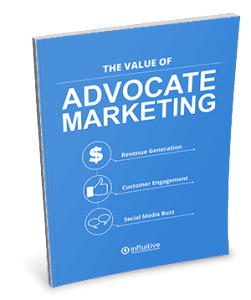More importantly, they’re relying less on information from marketers and salespeople, and more on advice from their peers when they make a buying decision.
According to a new report from Software Advice, getting feedback from real customers is the most effective tactic for evaluating software.
Buyers who got feedback from customers were 5.2X more satisfied with their software purchase than those who didn’t take this step.
In The Best Software Selection Tactics for SMBs report, “feedback” isn’t limited to calling a vendor’s hand-selected customer references. This strategy also includes:
- Getting referrals from peers and colleagues
- Using social media – such as LinkedIn and Quora – to ask questions and get recommendations
- Reading software reviews
- Seeing what others are saying in user communities
- Reviewing other crowd-sourced information

Ashley Verrill, Content Strategist at Software Advice
Peer recommendations are the most effective software selection tactic because they give buyers peace of mind, says Ashley Verrill, Content Strategist at Software Advice.
“Buyers no longer have to rely on what vendors tell them to think about a product. Just like they read reviews on TripAdvisor before they book a hotel, they also rely on crowd-sourced information and peer reviews before they purchase software.”
This need for assurance is also why having an attorney review an agreement ranked as the second most effective tactic for evaluating software. An attorney’s approval also provides buyers with peace of mind and can make or break a software sale.
When do buyers seek peer recommendations, and what do they want to learn?
Buyers seek peer reviews at the beginning of the sales process when they conduct research via user groups and social media.
When they get to the end of the sales process, they check vendor references as a final step to make sure they aren’t missing anything.
According to Ashley, these are the top four questions that software buyers want peers to answer:
- Is the software’s interface intuitive? There’s nothing worse than investing thousands of dollars in software only to find out that your team doesn’t like it. Buyers want to hear stories from others in similar organizations who have implemented the software. How long does the onboarding process take? How easy was it?
- Does the vendor offer good support? Software is supposed to make our lives easier, but poor customer support can turn the product into a huge annoyance. Buyers need to know that your support team is responsive and that they’ll have the right support options to meet their needs.
- Is the software flexible? Buyers are looking for software that can be customized to meet their needs. SMBs typically don’t have in-house engineers who can customize their software, so they want the process to be easy.
- Does the software integrate with my existing systems? Buyers want to know how easy it is to integrate software with their existing systems. Customer references that speak to this point are extremely valuable.
With this study, we can conclude that the more references and referrals you get, the happier your future customers will be with your software – and the more likely they will be to refer others to do business with your company. What kind of impact would this have on your revenue growth?
Learn more about the value of mobilizing your company’s biggest fans
 Advocates can help B2B companies scale outreach during what is often a long, complex buying cycle involving multiple stakeholders. Through advocate marketing, companies can transform word-of-mouth from something that is haphazard to an intentional, actionable process.
Advocates can help B2B companies scale outreach during what is often a long, complex buying cycle involving multiple stakeholders. Through advocate marketing, companies can transform word-of-mouth from something that is haphazard to an intentional, actionable process.
But how do you actually measure the value of customer advocacy? This eBook demonstrates how forward-thinking companies are mobilizing their best customers to deliver results through every stage of the revenue cycle.












































